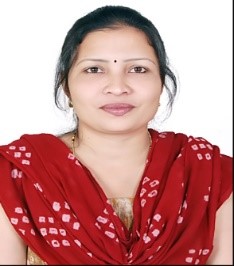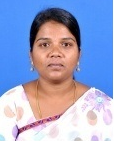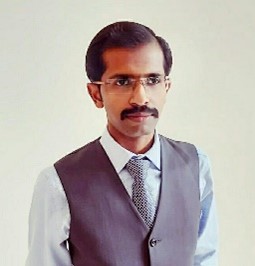IOT Implementation in Energy Harvesting
Written by Swetha Shekarappa G, Sheila Mahapatra, M. Senbagavalli, and Saurav Raj
Strong interest in the creation of low-power wireless sensors has increased as a result of the Internet of Things' (IoT) fast growth. In today's IoT systems, wireless sensors are incorporated to collect data in a dependable and useful way to monitor processes and manage mechanisms in sectors like mass transit, electricity, civil infrastructure, smart buildings, environment monitoring, universal health care, defence, production, and fabrication.
Introduction
When these IoT devices are built and put into use, they must take into account their long-term and self-sustainable operations from the beginning. In the past, wireless sensors were frequently powered by batteries, which, albeit allowing for overall low system pricing, could have a severe effect on the life and functionality of the broader ecosystem in which they are employed. Energy Harvesting (EH) technology is a potential, environmentally friendly option that, in some situations, fully substitutes the need of batteries while extending the lifespan of these sensors. The most efficient use of energy and the availability of lower network operating costs are two additional benefits of energy harvesting from a financial and pragmatic standpoint.
Here, we examine current developments in IoT energy collecting methods. The Internet of Things is not a new trend anymore. With applications in numerous areas including transportation, energy, civil infrastructure, smart buildings, environment monitoring, healthcare, defence, production, and industry, it has emerged as one of the most significant technological advancements of the twenty-first century. IoT is still expanding, and according to researchers, 22 billion IoT devices are expected to be networked to the Internet and be able to converse with one another by 2025 [1].
The following are the key elements of the IoT system [2]:
- IoT devices (sensors and actuators) are in charge of data collection and quality assurance.
- The Internet of Things' connectivity (protocols, gateways) oversees data transmission in the digital, cyber-physical environment.
- Data is stored in the IoT cloud, which also serves as a decision-making hub.
- Information management and IoT statistics oversee interpreting the data.
- User interfaces and end-user hardware aid in system configuration and operation.
The IoT vision makes use of the advantages of Wireless Sensor Networks (WSNs) [3], [4] and depends on these systems to collect environmental data and to carry out activities as a result of data analysis. IoT relies on Internet Protocol (IP) connectivity to ensure that each of its parts, or "things," has a unique address, but WSNs are not always connected to the Internet. WSNs are now an essential part of the IoT ecosystem because of the consistently rising power and falling cost of microelectronics, as well as the advancements in hardware power efficiency and wireless communication standards. The routing protocol should ideally be as lengthy as conceivable. Consequently, when designing and developing wireless sensors, consideration must be given to energy economy and prolonged battery life. Figure 1 gives the basic IoT components.
Figure 1: Basic IoT Components
Energy Harvesting Techniques for IOT
Numerous power sources can be taken into consideration for energy gathering. These can be divided into the various groups based on the energy streams from which they were extracted, such as:
- Conventional Energy Harvesting
- Automated Energy Harvesting
- Mortal Energy Harvesting
- Bioenergy Harvesting
- Hybrid Energy Harvesting
Power Management For IoT Systems
The two main propelling elements for IoT devices, particularly in remote locations, are electricity and energy storage. Three basic types of power management systems should be taken into account. The first category, which is most frequently used for indoor applications, has direct main power linked nodes. The second alternative is an able to charge dock with a replenishing option like solar, hydro, or wind. The third one is intended to use meagre amount of power by transferring very little data sporadically and either contains a rechargeable battery or a non-rechargeable battery. The standard IoT end nodes are made to consume less power than edge processors. Due to factors such integrated high throughput sensors, sophisticated data processing, and large data transmission, this power consumption increases. Nevertheless, by utilising various strategies, such as the semi-active phase and sleep phase, these energy utilisations can be reduced. IoT power regulation must be standardised based on the type of harvest and the positioning of the sensors.
Technical Challenges
Even though energy harvesting technology has made considerable strides over the past ten years, several technological hurdles need to be overcome before the production of self-sustaining IoT devices becomes commonplace.
- Modelling of harvested energy.
- Energy storage harvested.
- Multiple sources of energy harvesting.
- Scale and financial effectiveness.
- The effect of renewable energy resources on the ecosystem.
Conclusion
The architecture and deployment of self-powered IoT devices has drawn a lot of interest from the commercial and numerous research sectors. In this article, we looked at the energy techniques generally utilised in the IoT setting. We came to the conclusion that some energy harvesting systems in future, using small size PV cells or piezoelectric devices, can supply a large amount of energy for a long period. Other resource harvesting methods, in contrary, rely on cycles such as day/night, business days/weekends, and are difficult to insulate. They offer modest amounts of energy at distinct times and call for massive circuits for trapping the energy. The most effective energy harvesting method will vary depending on the variable to be evaluated, the IoT device's use case situation (fixed/mobile, surface/built in), as well as its environment (indoor/outdoor) with harvesting mechanisms in terms of their design, hardware implementation, and operation with the possibilities of solar and RF energy sources.
References
- K. L. Lueth. (Nov. 19, 2020). State of the IoT 2020. Accesssed: Dec. 29, 2020. [Online]. Available: https://iot-analytics.com/state-of-the-iot-2020-12-billion-iot-connections-surpassing-non-iot-for-the-first-time/
- Y. Khan. (Apr. 21, 2020). 5 Essential Components of an IoT Ecosystem. Accessed: Nov. 11, 2020. [Online]. Available: https://learn.g2.com/iot-ecosystem
- J.-M. Dilhac and V. Boitier, ‘‘Wireless sensor networks,’’ in Energy Autonomy of Batteryless and Wireless Embedded Systems, J. Dilhac and V. Boitier, Eds. Amsterdam, The Netherlands: Elsevier, 2016, ch. 1, pp. 1–11.
- E. Suganya, S. Sountharrajan, K. S. Shandilya, and M. Karthiga, ‘‘IoT in agriculture investigation on plant diseases and nutrient level using image analysis techniques,’’ in Internet of Things in Biomedical Engineering, V. E. Balas, L. H. Son, S. Jha, M. Khari, and R. Kumar, Eds. New York, NY, USA: Academic, 2019, ch. 5, pp. 117–130.
This article was edited by Hossam Gabber.
To view all articles in this issue, please go to January 2023 eBulletin. For a downloadable copy, please visit the IEEE Smart Grid Resource Center.

Swetha Shekarappa G received her B.E. Eng. Degree in Electrical and Electronics Engineering from Visvesvaraya Technological University, Belagavi in 2010. She received her M. Tech in 2012 from Visvesvaraya Technological University, Belagavi. Currently, she is working as an Assistant Professor at Alliance University, Bangalore. She is also pursuing PhD from Alliance University, Bangalore, India. She is a lifetime member of ISTE and student member of IEEE. Her areas of interest include Power System optimization, FACTS Devices, Renewable Energy, Distributed Generation, Swarm, and evolutionary optimization techniques.

Sheila Mahapatra is Professor and Head of the Electrical and Electronics Engineering Department and Assistant Dean Research Alliance University. She is a lifetime member of IET, IEEE and ISTE and her areas of interest include Power System Optimization, Stability and Control, and Evolutionary Computing.

M. Senbagavalli is an Associate Professor in the Department of Computer Science Engineering. She received a doctoral degree from Anna University, Chennai on the topic "Opinion Mining of Health Data for Cardiovascular Disease Diagnosis Using Unsupervised Feature Selection Algorithm." Her areas of interest in research include data mining, big data analytics, machine learning, deep learning, and IoT. She has presented and published papers in national and international conferences and journals focusing on data mining, big data analytics, cloud computing, and opinion mining.

Saurav Raj completed his B.Sc. Engg. in Electrical and Electronics Engineering from R.P. Sharma Institute of Technology, Patna, India in 2012. Thereafter he completed his Ph.D. degree in Electrical Engineering from IIT(ISM) Dhanbad, India in 2018. He is a lifetime member of ISTE. Currently, he is working as an Assistant Professor at the Institute of Chemical Technology Mumbai, Marathwada Campus, Jalna, India. His areas of interest include power system optimization, reactive power planning, Swarm and evolutionary optimization techniques and FACTS devices.
To have the Bulletin delivered monthly to your inbox, join the IEEE Smart Grid Community.
Past Issues
To view archived articles, and issues, which deliver rich insight into the forces shaping the future of the smart grid. Older Bulletins (formerly eNewsletter) can be found here. To download full issues, visit the publications section of the IEEE Smart Grid Resource Center.





